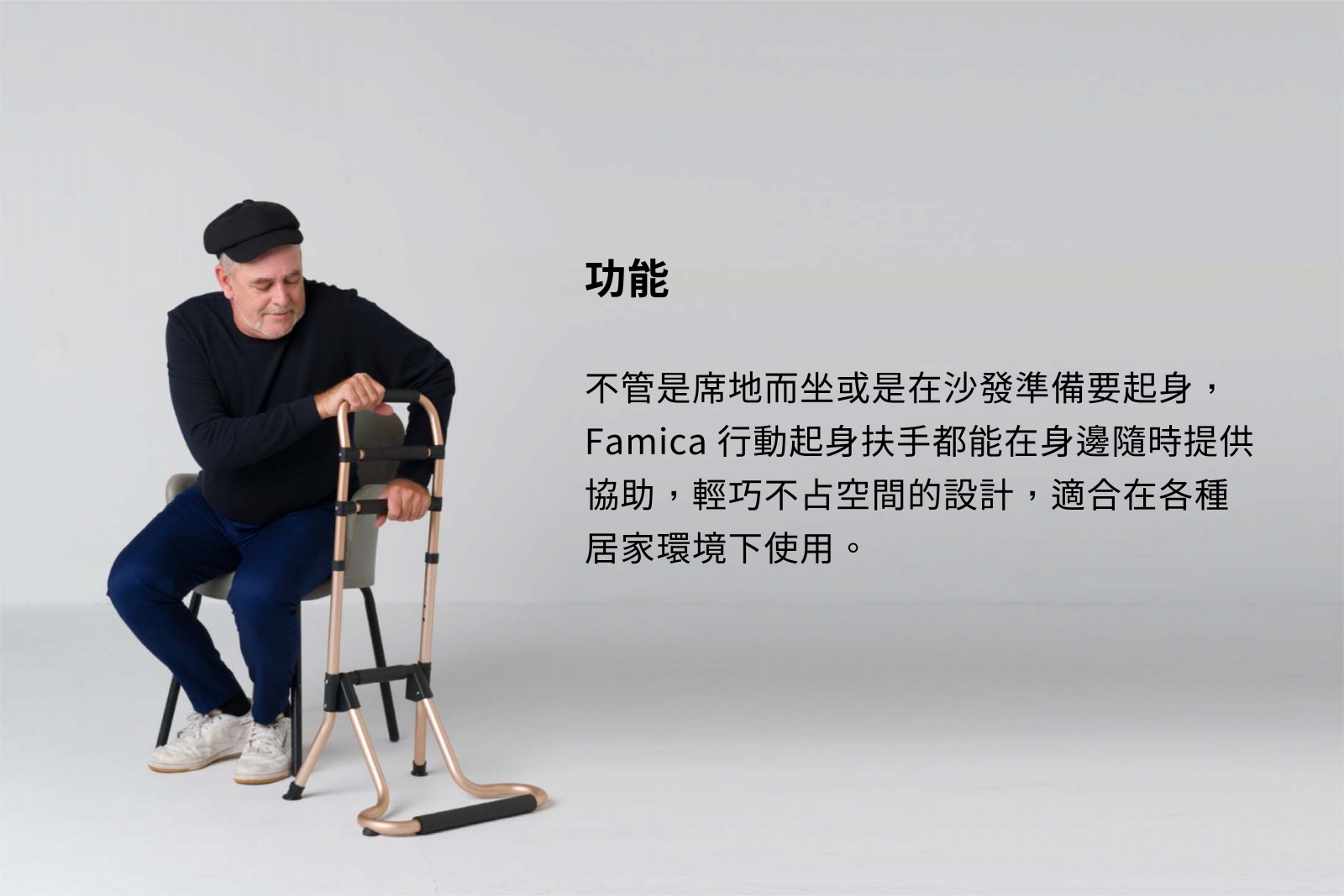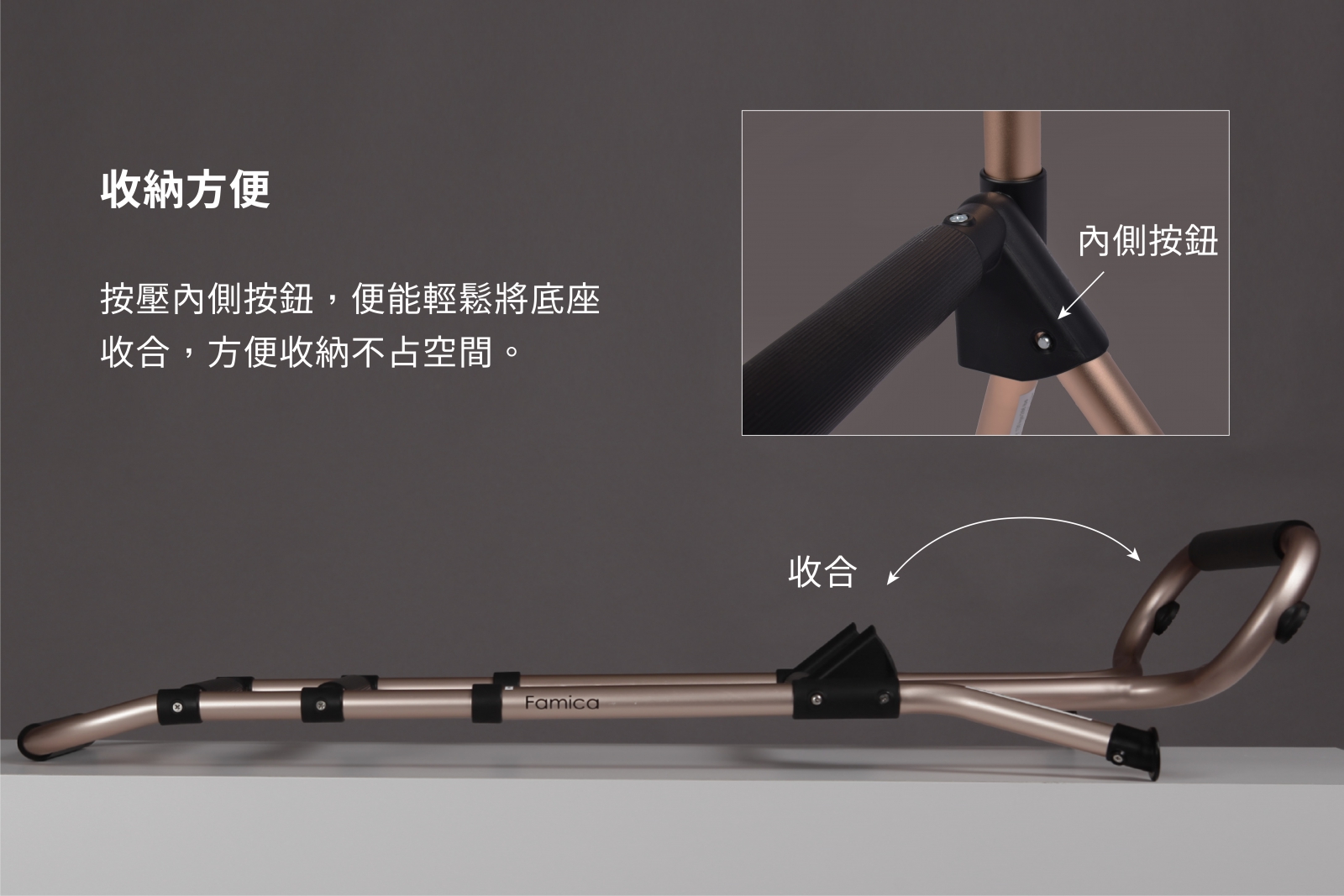Handrails for Mobility: Reducing the Risk of Falls
How dangerous are falls for the elderly? They account for over 80% of accident-related fatalities among Taiwan's population aged 65 and above!
According to the 2019 nationwide statistics, the top two causes of death among individuals aged 65 and above due to accident-related injuries are associated with falls. The first cause accounts for 43.2%, related to slipping or tripping, while the second cause, comprising 37.1%, is attributed to loss of balance or dizziness. This demonstrates that falls contribute to over 80% of injuries and fatalities among the elderly. Aging can lead to a decline in muscle mass and strength, coupled with the prolonged use of medication for chronic conditions, which may increase the risk of falls. If a fall occurs, it can result in skin abrasions, fractures, and, in severe cases, permanent mobility impairment or death. Therefore, the impact and dangers of falls on the health of the elderly should not be underestimated.
How to assess whether individuals aged 65 and above are at high risk of falls?
There is a simple assessment method with the following criteria:
1. Have there been one or more instances of falls in the past 12 months?
2. Have there been recent medical visits due to falls?
3. Do you experience difficulty walking or maintaining balance?
If the answer to any of these questions is affirmative, the individual belongs to the high-risk group for falls. In such cases, professional consultation and diagnosis should be sought to prevent future risks of falls and injuries.
According to the Ministry of Health and Welfare's 2017 National Health Interview Survey, 15.5% of individuals aged 65 and above in Taiwan reported experiencing a fall in the past 12 months. This means that approximately one in six seniors experienced a fall in the previous year. The top three self-perceived causes of falls among seniors are leg weakness, poor balance, and poor vision.
The same survey indicates that only 20% of seniors who sought medical attention after a fall actively pay attention to and improve home safety. It is noteworthy that many seniors perceive falls as accidental and inconsequential if no injury occurs. Consequently, they may not take any preventive measures after a fall, increasing the likelihood of recurrent falls in the future.
Further analysis reveals that the most common locations for falls and injuries at home are the bedroom (35.6%), followed by the living room (30.8%) and the bathroom (17%). In response to these common locations and causes of falls among seniors, the Famica design team has specially designed the "Famica Mobility Aid Handle." With multiple handle heights and a stable center of gravity, this aid provides assistance to seniors when transitioning from sitting on the floor or getting up from a sofa or chair, making it suitable for use in various home environments.

Common home mobility aids often suffer from issues such as being heavy, difficult to grip, and taking up a lot of space. In response to these challenges, the Famica design team has opted for lightweight and durable aluminum alloy material for the "Famica Mobility Aid Handle," weighing just 1.28 kilograms in total. To enhance user comfort, the handle is equipped with soft and thick foam padding, ensuring that extended use is comfortable and strain-free.
Moreover, the design includes a special collapsible storage structure, allowing the "Famica Mobility Aid Handle" to be quickly folded when not in use. This feature enables convenient storage under the bed, behind the sofa, or in other spaces, making it suitable for compact living environments. Additionally, its portable nature makes it ideal for travel, as it can be easily stowed in the trunk of a car for transportation.

Being proactive about home safety for elderly family members is especially important! In addition to encouraging them to stay active and maintain a balanced diet, selecting a suitable mobility aid for them to use at home for standing up and walking can significantly reduce the risk of accidents. It can also help maintain their independence and ensure a comfortable and convenient quality of life.